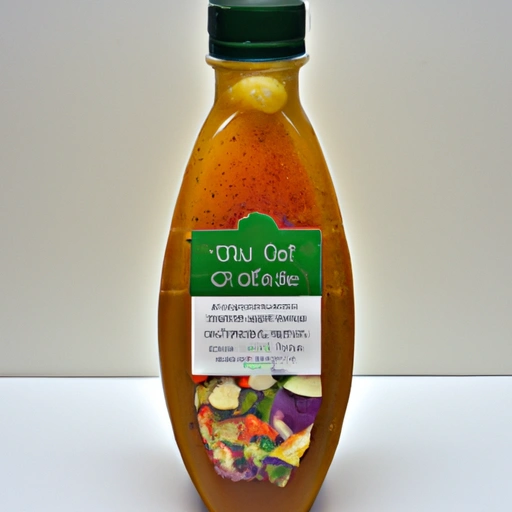Italian Salad Dressing
Description

Italian salad dressing is a vinaigrette-type emulsion consisting of vinegar or lemon juice, water, vegetable oil, chopped bell peppers, onion, garlic, sugar, and a variety of herbs and spices including oregano, basil, dill, and fennel. This dressing is known for its tangy flavor and is commonly used to dress leafy green salads, pasta salads, marinades, and as a seasoning enhancer in various dishes.
Common uses
Italian salad dressing is frequently used to add zest to salads, as a marinade to tenderize and flavor meats, and as a zippy addition to sandwiches or wraps. Its tangy taste can enhance the flavor of vegetables, grilled dishes, and can even be used as a dip for breads or appetizers.
Nutritional value
Calories
Typically, 2 tablespoons (about 30 ml) contains approximately 70-80 kcal.
Protein
Italian salad dressing has a negligible amount of protein, less than 1 g per serving.
Fat
It contains around 7 g of fat per 2 tablespoons, with a mix of saturated and unsaturated fats.
Carbohydrates
Carbohydrates content is about 2-4 g per serving, mostly from sugars and herbs.
Vitamins
Certain vitamins such as Vitamin E and Vitamin K can be found in Italian salad dressing, amounts vary depending on the recipe.
Minerals
It may contain trace minerals like potassium and sodium, the latter often contributed by added salt.
Health benefits
While Italian salad dressing can add flavor without adding a significant number of calories when used in moderation, the presence of unsaturated fats from the vegetable oil can contribute to heart health. The herbs used also provide antioxidants which have various health benefits.
Potential risks
Consuming Italian salad dressing in large quantities can lead to excessive intake of sodium and fat, which may contribute to health issues such as hypertension and an increased risk of heart disease. It is recommended to use this dressing in moderation, especially for those with dietary restrictions.
Common recipes
Italian salad dressing is used in green salads, pasta salads, antipasto, and as a marinade for chicken, fish, or vegetables.
Cooking methods
It is often used cold and added to dishes just before serving to maintain the integrity of its flavor. However, it can also be used in baking or grilling when used as a marinade.
Pairing with other ingredients
It pairs well with Mediterranean ingredients like olives, feta, tomatoes, and cucumbers, alongside crusty bread or over roasted potatoes.
Summary
Italian salad dressing is a well-loved condiment that adds a burst of flavor to various dishes. With its combination of tangy vinegar, rich oil, and herbaceous spices, it's a versatile addition to any kitchen. Its ease of use and ability to complement a wide variety of foods have solidified its place in both traditional and modern cuisine around the world.